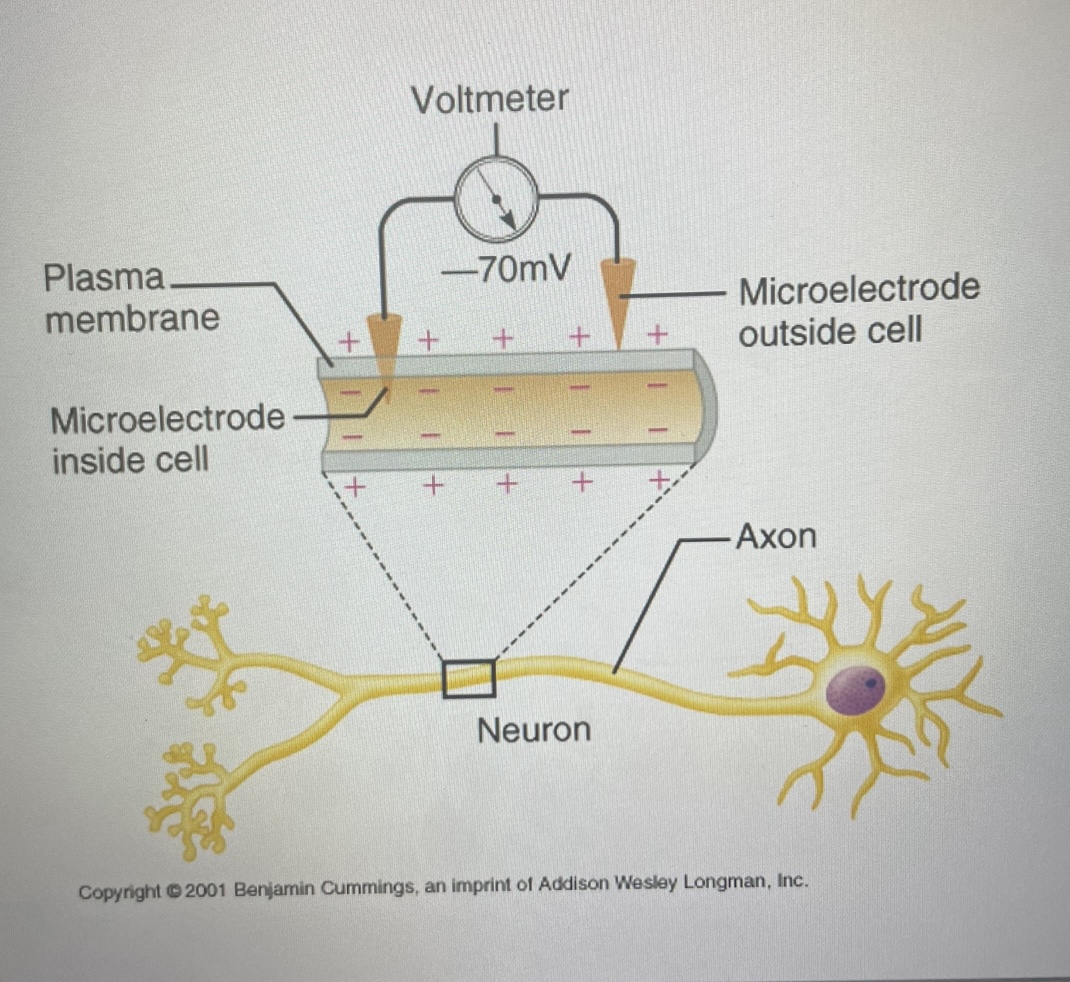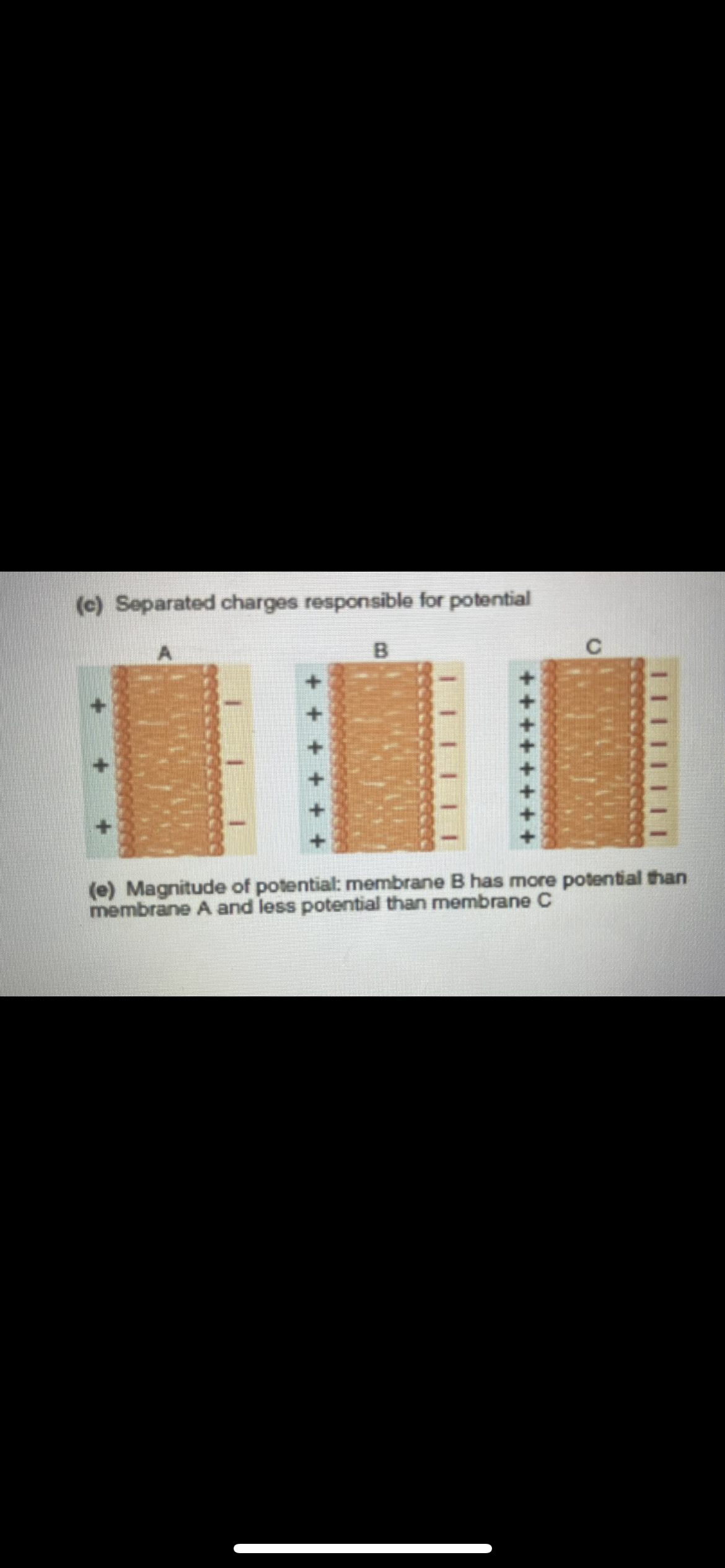resting membrane potentials
1/13
There's no tags or description
Looks like no tags are added yet.
Name | Mastery | Learn | Test | Matching | Spaced |
|---|
No study sessions yet.
14 Terms
what is the resting membrane potential (3)
The membrane potential refers to the separation of opposite charge that exists across the cell membrane
The difference in electric charge between the inside and outside of a neuron's cell membrane/ axon
Inside of an axon has a more negative charge compared to the outside which has a more positive charge
what is the typical value of the resting membrane potential
-70 mv

show a diagram of how to measure the RMP in a neuron
Note when drawing the voltmeter make sure one wire is IN the membrane and one is clearly OUT - so you can actually measure the RMP make this clear !!!

what causes the RMP (3)
• an unequal distribution of key ions
• the selective permeability of the membrane – more permeable to K+ / less permeable to Na+
• the Na+K+ ATPase pump = pumps 2K+ into the cell for every 3Na+ out of the cell – NOWT KIN
why is the membrane more permeable to K+ (2)
because of the presence of leakage channels
therefore K+ is the cation for which there is the greatest amount of leakage (though leakage channels) across the resting plasma membrane
how is the RMP established / maintained across the axon membrane in a neuron (5)
Na+/K+ pump actively transports 3 Na+ out and 2 K+ into the axon (NOWT KIN)
this creates an electrochemical gradient: higher concentration of K+ inside the axon and a higher concentration of Na+ outside the axon
membrane is more permeable to K+ / less permeable to Na+
K+ diffuses out of the axon by facilitated diffusion but Na+ cannot diffuse in
also negatively charged proteins/intracellular proteins inside the axon - cannot leave as the membrane is not permeable to them (0 relative permeability)
(Basically this all contributes to the -70mv and establishes how it's more positive outside the axon and more negative inside)
explain what polarized means and give an example
something that is charged
eg - RMP = -70 mv
explain what depolarized means and give an example
a reduction in charge
eg = -70 mv goes to -30 mv - less charge across the cell membrane
explain what hyperpolarized means and give an example
means an increase in charge
eg = -70mv goes to -90 mv
how is a membrane described as having no potential
membrane has no potential if: there is an equal number of positive and negative ions/charge inside and outside the membrane
how is the membrane described as having potential
membrane has potential (unequal distribution/separation of charge) if:
there is more positive charge outside than inside (positive charge has moved from inside to outside) =
where do the separated charges lie (4)
the excess negative and positive charges are attracted to each other and line up on the layer / edge of membrane potential
however remainder of inside and outside of cell = neutral
separated charges lie on the thin layer on the membrane potential
only takes a few small changes in order for there to be a membrane potential
which membrane has more potential
c

For an open channel, what factors determine in which direction ions move through the channel?
Both – the electrochemical gradient (concentration and membrane potential / electrical gradient)